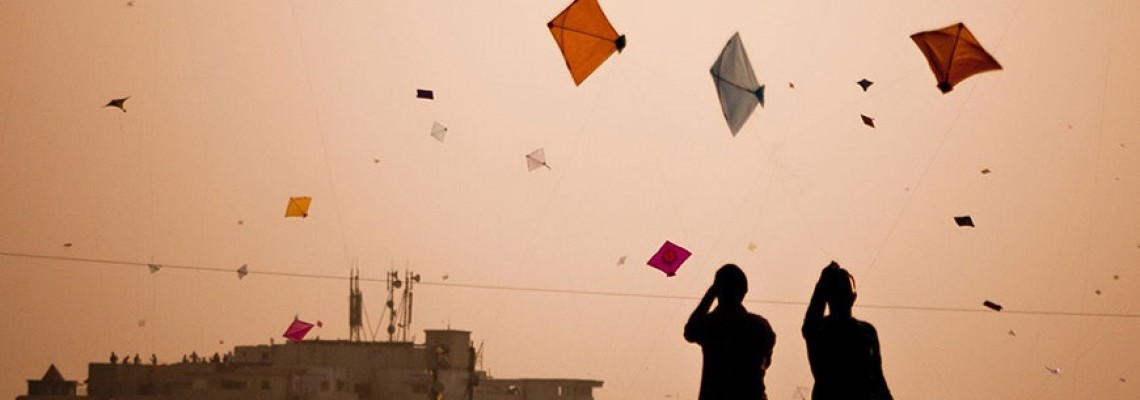
In the heart of
winter, as the chill in the air becomes more palpable, Kolkata awakens to the
crisp mornings adorned with a gentle fog that veils the cityscape. For every
Bengali, this season is not just about weather changes; it signals the arrival
of Sankranti, bringing with it the sweet fragrance of freshly harvested gur and the
delightful crunch of delectable joynagar moa.
As a proud Bengali, these winter days are more than a seasonal shift; they are
a canvas painted with the hues of age-old traditions, culinary delights, and
the timeless charm of familial togetherness.
Sankranti, a
festival celebrated across India, holds immense cultural significance, though
its expressions vary regionally. In India, Sankranti marks the transition of
the sun into the northern hemisphere, signifying the end of the winter
solstice. This auspicious occasion is observed with diverse customs, rituals,
and traditional delicacies in different states. While the festival is known as
Pongal in Tamil Nadu, Lohri in Punjab, and Makar Sankranti in various other
parts, the Bengali celebration of Sankranti, locally known as Poush Sankranti,
possesses its unique charm.
In Bengal, the
festival is intertwined with the cultural fabric, not only symbolizing the
agricultural harvest but also embodying a deep connection to the roots of
Bengali traditions. The use of freshly harvested jaggery, locally referred to
as "Notun Gur,"
distinguishes the sweets prepared during this time, adding a distinctive flavor
to the culinary repertoire. The tradition of kite-flying, known as "Tero
Parbon," takes on a special significance, filling the skies with colorful
kites and creating a festive atmosphere unique to Bengal. Sankranti in Bengal
transcends a mere seasonal celebration; it becomes a narrative of cultural
heritage, familial bonding, and the distinctive flavors that make it an
unparalleled experience in the diverse tapestry of Indian festivals.
As winter
tightens its embrace, the kitchen becomes a sanctuary of warmth and
anticipation, filled with the enticing aroma of gur, or jaggery, being melted
and molded into various forms. Notun Gur, with its
golden hue and distinct flavor, takes center stage in a culinary drama that
unfolds with each passing day.
The heartbeat
of the Sankranti kitchen is the Pithe-Puli, traditional confections made from
rice flour, jaggery, and coconut. Among them, Patisapta stands out, resembling
thin crepes filled with a luscious mixture of coconut, khoya, and gur. Each
bite is a culinary journey through winter memories, invoking the warmth of
hearth and home.
Gokul Pithe,
the tiny dumplings fried to perfection, resonate with the crackling sounds of
winter bonfires. The sweet crunch of these bite-sized wonders, made with love
and generations of culinary wisdom, encapsulates the essence of winter
festivities and the rich culinary heritage of Bengal.
And then
there's Joynagar
moa, a winter delicacy that carries the nostalgia of chilly evenings spent
around bonfires. This puffed rice and jaggery concoction, infused with the
smoky aroma of the season, is not just a snack but a manifestation of the
winters of yore. Each bite is a journey through time, a reminder of simpler
pleasures, and a connection to the roots.
Winter Tales and Time-Tested Traditions
As the city
prepares for the grand Sankranti celebration, it becomes evident that the
festival is not just about the sweets and snacks; it's a celebration deeply
rooted in cultural traditions.
The Tero
Parbon, or the art of kite-flying, takes on a unique charm against the backdrop
of winter skies. The kites dance to the rhythm of the season, their vibrant
colors contrasting with the muted tones of winter foliage. Each soaring kite
becomes a messenger, carrying the spirit of winter festivities from one rooftop
to another. The rooftop battles, the camaraderie, and the laughter blend into a
festive symphony, creating memories that linger far beyond the season.
The beats of
traditional drums, the graceful movements of folk dances, and the soulful tunes
of Baul music are more than mere performances; they are echoes of winters past,
resonating through the alleys of Kolkata. The cultural kaleidoscope becomes a
nostalgic melody that lingers in the air, connecting the present to the
traditions of yesteryears.
Bonfires,
symbolizing the communal hearths of winter, gather families and friends around
the warmth of tradition. The flickering flames, like storytellers, recount
tales of Sankranti celebrations that have weathered the chill of countless
winters. The warmth extends beyond the fire; it's a metaphor for the communal
spirit that defines Sankranti, as people come together to share stories,
laughter, and the joy of being part of a tradition that transcends time.
As a Bengali
navigating the winter landscape of Sankranti, I find myself immersed in a
season that goes beyond temperature drops and woolen scarves. It's a time when
gur and joynagar moa reign supreme, when the kitchen
becomes a stage for culinary theatrics, and when the heart sways to the rhythm
of cultural traditions.
Sankranti in
Kolkata is not just a festival; it's a winter odyssey, a journey through
flavors, memories, and traditions that withstand the test of time. As the
winter winds weave stories through the city, and the taste of gur and joynagar
moa linger on the palate, I'm reminded that Sankranti is more than a
celebration – it's a cherished chapter in the chronicles of a Bengali winter.
Shubho
Sankranti, where every bite, every beat, and every tradition is a step into the
timeless charm of Bengal's winter festivities. May the warmth of the season and
the flavors of tradition fill your hearts with joy and nostalgia, creating
memories that will be passed down through generations.

Leave a Comment